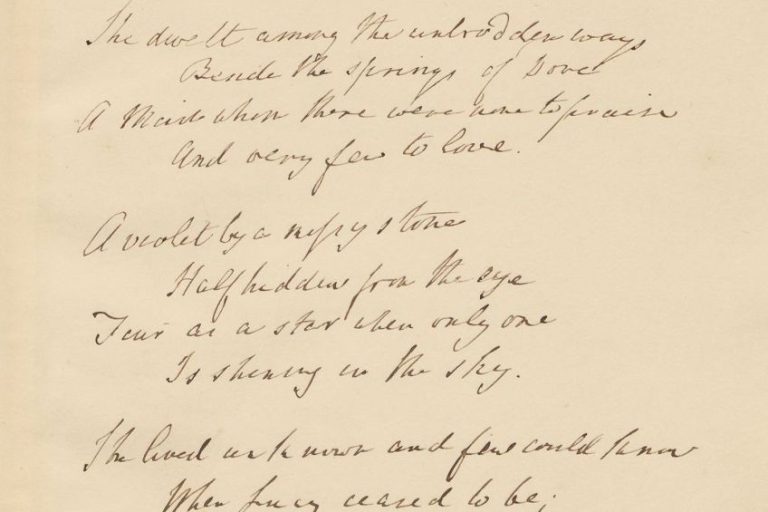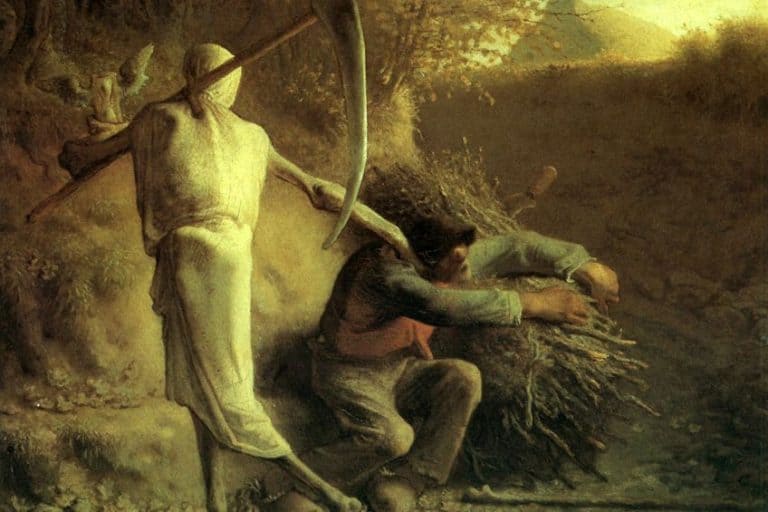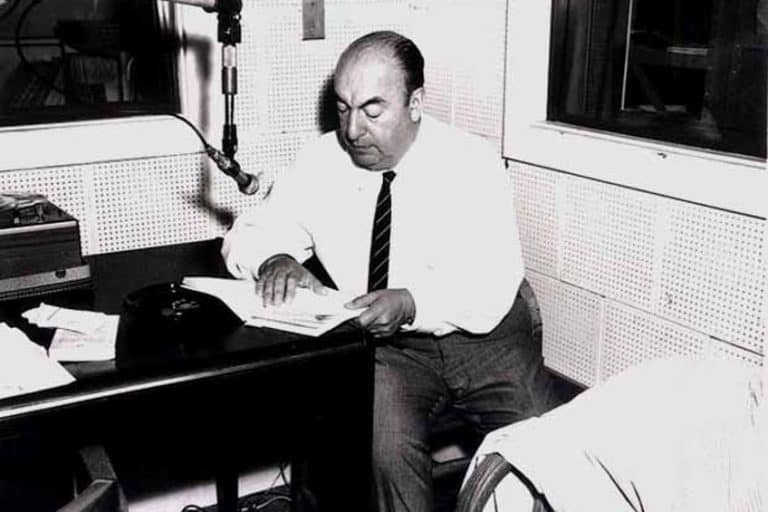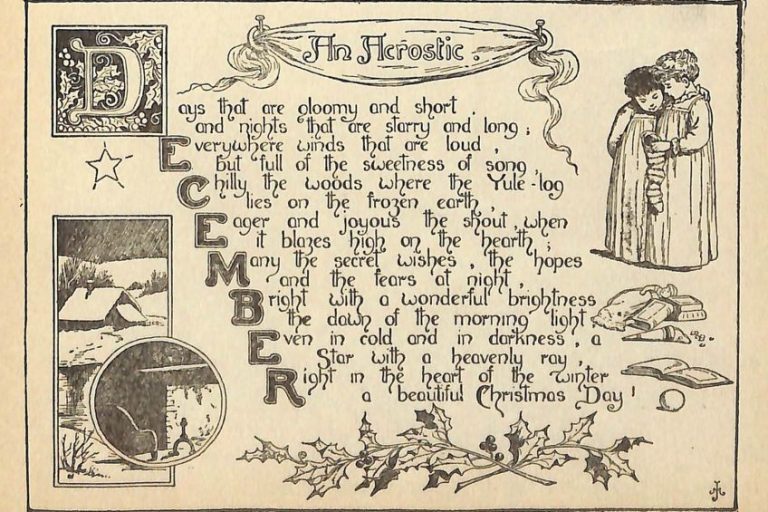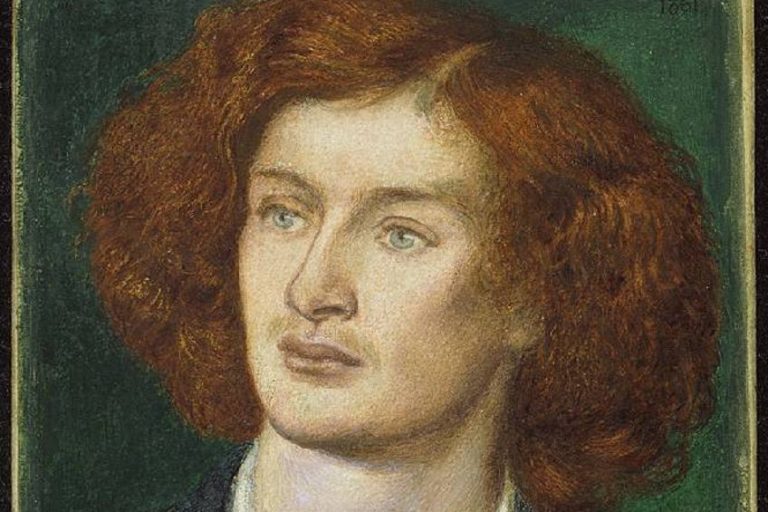Poems With Metaphors – Representational Poetic Devices
Today, our topic of choice will be metaphor in poetry. Specifically, we are going to examine five different metaphor poem examples to see how metaphors are used in poetry. Each of these poems is worth reading in its own right, but we are going to have a look at how and why they use metaphor. Let’s have a look at these poems with metaphors to see the various ways this figure of speech is used.
Poems With Metaphors
So, what is a metaphor in poetry? A metaphor is a term that refers to the way in which one thing is used as a representation of another thing. This also means that it is a figure of speech. For instance, we can use the concept of ice as a representation of the way in which certain people act. In fact, when we refer to certain people as being “cold” people, that is itself a metaphor that uses lowered temperature to describe the way that someone acts. Metaphors are found throughout both ordinary and poetic language. Today, we are going to focus on the use of metaphors in poetry.

When I have Fears That I May Cease to Be (1848) by John Keats
| Date Published | 1848 |
| Type of Poem | Shakespearean sonnet |
| Rhyme Scheme | ABAB CDCD EFEF GG |
| Meter | Iambic pentameter |
| Topic | Death |
When I have Fears That I May Cease to Be is often considered to be one of the greatest poems ever written by John Keats and a fantastic example of one of the many poems with metaphors. Metaphors are a common feature in many examples of poetry, and this particular poem has remained resonant since the Romantic period because of the relatable topic that it wishes to convey to the reader.
In basic terms, the poem explores various aspects around death. It is about living your life with a view towards doing everything that you may want to do with your life and the impossibility of being able to achieve everything that you may wish to achieve. In terms of John Keats, this was an especially pertinent observation as he died at the age of 25 without achieving everything he had wanted to achieve.
The poem in question makes use of the metaphor of reaping.
This does not mean the grim reaper, as in the one who comes for you in death, although it may be a beneficial additional image that the poem conjures in the reader. Instead, the concept of the reaper in terms of its actual usage, means someone who reaps, or harvests, from a crop of some kind. In the metaphor that Keats uses in the early stages of this poem he uses the idea of crops as the ideas that he has, the ideas he has yet to write. He fears that he will not be able to harvest all of this “full ripened grain” that is his array of ideas.
This is only one of the metaphors that is used in this particular example, but it does serve as a strong one that has remained persistent through the years as reader after reader has seen what Keats has produced. It is difficult to not see this poem as directly related to the poet who died so young. Imagine what more he could have harvested from his mind had he been given the time to do so? The sadness of dying while young usually lies in what we see as wasted potential. What else could have been accomplished had he the time? What could he achieve with only a few more turns of the hourglass? What great work is only one year away from a death that may come prematurely?

O Captain! My Captain! (1865) by Walt Whitman
| Date Published | 1865 |
| Type of Poem | Elegy |
| Rhyme Scheme | AABBCDED FFBBGDHD IIAAFDFD |
| Meter | Iambic meter |
| Topic | Death of Abraham Lincoln |
O Captain! My Captain! is seen as one of the most famous poems by Walt Whitman of all time. This poet may have been known for his free verse poetry, but this poem is written in a more ordered and structured sense. Perhaps this more structured nature came out of a sense of respect, but that is not something that we can know for certain. All that we can know is why this poem was written and who the central figure behind it is.
In terms of poems with metaphors, this particular metaphor has become a famous one. The poem intended to be in commemoration of the life of the recently assassinated Abraham Lincoln. Walt Whitman was an admirer of the president who was famously assassinated shortly after the conclusion of the American Civil War, and this poem uses the extended metaphor of the captain of a ship to reinforce the idea that Lincoln was someone important who steered the country through turbulent seas to come out at the end.
The ocean is often portrayed as something wild and untamable.
It is endlessly raging against us and, if we are not careful, it can drag us down into the depths. However, the ocean also serves as a powerful metaphor for turbulent times. The American Civil War, for instance, was a particularly turbulent time in the history of the United States as brother killed brother and neighbors waged war on each other. In this sense, Whitman uses metaphor to claim that Abraham Lincoln was the captain of the vessel that is the United States.
The use of a captain metaphor in a poem is also a strong one. A captain is someone who needs to make tough decisions, they need to be headstrong and resolute, and they cannot become easily swayed or confused by what is happening around them. A captain must remain steadfast in what they are doing, and Whitman used this highly complimentary image that a great and noble leader who had aided them through a terrible storm had passed from the world.

The Road Not Taken (1915) by Robert Frost
| Date Published | 1915 |
| Type of Poem | Narrative poem |
| Rhyme Scheme | ABAAB |
| Meter | Iambic tetrameter |
| Topic | Choices |
The Road Not Taken is probably one of the most famous poems with metaphors. This particular poem has become one of the most notable poems of the early 20th century and a poem that is immensely well-known and taught in practically every school that teaches the English language. The poem is not particularly difficult to read, and its message is a potent one that has resounded with many.
Robert Frost, the poet behind this immensely famous poem, has often been seen as an integral part of the folklore of the American countryside, and this poem reinforces that status. The poem, in basic terms, is concerned with a road. That road parts at one point. There are two ways for the walker to go. Do they go down the road that is clearly better maintained and has been walked more often, or does the walker go in the other direction? Down the road that appears to be far less popular among people.
This metaphor is about life. The road represents our lives and the fork in the road is a choice that we can make.
There are many choices in life that we can make, and while a great many choices do not mean all that much, there are some that are of immense importance. The speaker in this poem is concerned with which path to follow. Do they go the way that appears like more people have followed it? That would likely be a safer route. Or do you go the other way? That would be more dangerous to you.
This is also one of the most misunderstood poems, as many have read it as meaning that the speaker chose the path that was less traveled, but that is not what the poem actually says. The poem is not concerned with the speaker going the right way, but rather how they think about where they are going. The poem states that, after the speaker has chosen which way to go that “though as for that the passing there/had worn them really about the same.” This indicates that after choosing one path, the paths actually may have been very similar to one another. Did he choose the road less traveled? He says that, when recounting this story, that is what he will say, but he is not certain. Was it the right choice? He cannot know, because you can only choose to go down one path.

Do not go gentle into that good night (1951) by Dylan Thomas
| Date Published | 1951 |
| Type of Poem | Villanelle |
| Rhyme Scheme | ABA ABA ABA ABA ABA ABAA |
| Meter | Iambic pentameter |
| Topic | Death |
Do not go gentle into that good night is one of the most famous examples of a villanelle. This is a type of poem that has a very specific structure. It has nineteen lines, a repetitious alternating rhyme scheme, and a pair of lines that are repeated verbatim throughout the poem. This particular format is perfect for the reinforcement of a certain idea as lines are heavily replicated throughout the poem.
In terms of this particular text, it is a good example of metaphor in poetry because it uses the concept of the “good night” as a stand-in for death. We often view death as the final resting point of our existence. It is a place in which we no longer need to struggle. It is also why we, for instance, use the phrase “rest in peace” in graveyards, on crypts, tombstones, and so on.
However, we don’t know what happens after we die, and this text is concerned with that reality.
The poem practically screams at us to not go to that “good night”. It wants us to fight and claw as much as we can. We can only be certain of the “day”, which represents life, and so we should not allow ourselves to just die. We must fight against it with every shred of strength that we possess.
This poem does not want to see death as something that we must all eventually give in to. Instead, it must be “raged” against. We must be dragged, kicking and screaming, into our death because we should not want to die, we should want to live. This is not a sentiment that everyone will agree with, but it certainly is a potent image of death.

Caged Bird (1983) by Maya Angelou
| Date Published | 1983 |
| Type of Poem | Free verse |
| Rhyme Scheme | Irregular |
| Meter | Variable |
| Topic | Oppression |
When it comes to poems with metaphors, Caged Bird is one of the best. This poem has become a stunning and immensely famous example of metaphor in poetry. The poet in question, Maya Angelou, was considered to be one of the greatest poets of her generation before her passing in 2014. Her work was often concerned with civil rights, feminism, and the experiences of many African American individuals. This poem is no exception to that, and she uses metaphor in this poem to show the way in which oppression can damage those who have been caught in it.
The poem uses the metaphor of a bird in a cage. This particular image is a fantastic one to use because we have come to view birds in cages as something entirely natural. Where else would you keep a bird, after all? It is meant to be in a cage because if you dare to let it out, it will fly away forever. It cannot be as easily restrained as other animals that we make our pets, because dogs cannot fly away. However, the image of the bird locked in the cage is a potent one to focus on oppression and restriction.
The bird is a representation of those who are oppressed, it is a metaphor for the subordinate in our society.
In the case of Angelou’s particular focus, it would have been primarily concerned with civil rights for African American people in the United States. However, the potency of the metaphor means that it can easily be applied to other oppressed groups. The poem discusses the way in which the bird, regardless of being constrained to its cage, still sings. It still wants its freedom even if its wings have been clipped, its legs have been bound, and its movement is restricted by the cage that surrounds it.
The poem is also a very repetitious and song-like example of a metaphor poem. Similar words and phrases are repeated, there is a refrain that is repeated verbatim. The metaphor of the bird focuses on the psychological state of the bird. The way in which the bird wishes to leave, and how it thinks of what is outside of the oppression and restriction that it faces within the cage that confines it. No matter what, the bird never stops singing, and never stops protesting, because to stop would be far worse than anything else. The oppressors of the bird, and those the bird represents, must never allow themselves to think that the bird is happy to be confined. The bird wants to be free.
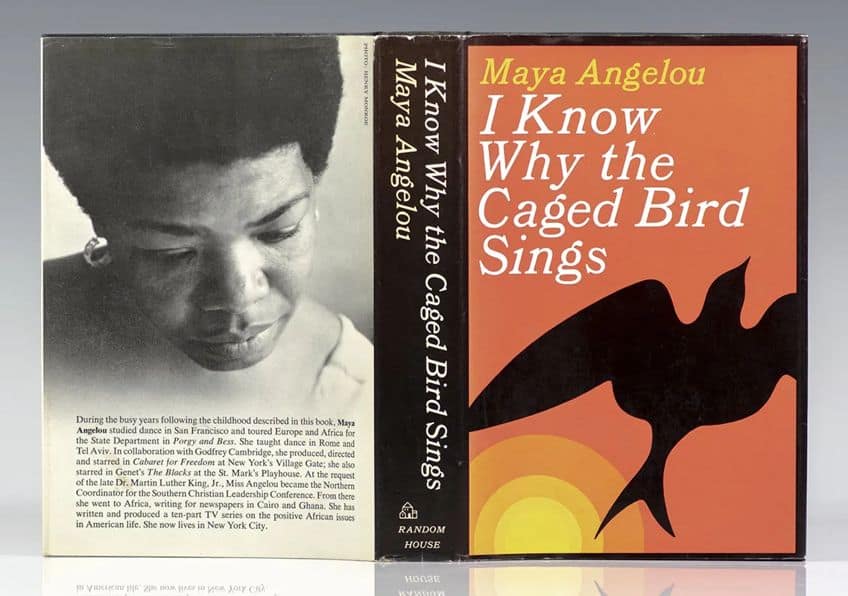
Poetry Without Metaphors
Metaphor and poetry tend to be seen in conjunction with one another much of the time. However, can there actually be a poem without metaphor? This really does depend on how you would want to argue about the nature of metaphor in general. As a metaphor is a figure of speech in which one thing represents something else, such as a fire representing destruction or a natural landscape representing a place without human development, the concept of the metaphor can be taken far further.
Ultimately, a metaphor is a symbolic representation of something else, and when a metaphor exists, it serves to eliminate the thing that it actually represents within a text. So, if you want to have a poem about love, you could talk about the heart, and how it responds to the one you love, and you can do this without ever using the word “love”. We know that it is about love even though we never used the word, but when it comes to symbolic representation, we can go far deeper and more semantically annoying.
There is a field known as semiotics, and the primary point that this field explores is the way that signifiers, like the images and words used by humans, represent other things.
The field is vast and incredibly influential, but let’s briefly discuss it in relation to only one thing: words. All words are actually representations of something. There is no direct, causal relationship between the word “tree” and an actual tree,
The easiest way to see this is through the use of other languages. The word “tree” in English means the same thing as “baum” in German or “arbre” in French. All three of these words mean “tree”, but they are all spelled differently, have different roots, and sound completely different from one another. Yet they all mean the exact same thing, and that is because all language is metaphorical.
There is nothing ordained by a higher power to be the correct term for a tree, we all have our own words for that same type of plant, and that’s because language is made up. At some point, an ancient human made a random noise that meant a tree, and that word then evolved and adapted over time into whatever the present word is in a language. There is nothing special about one form of a language over another, and as words can also change over time, that metaphor also changes.
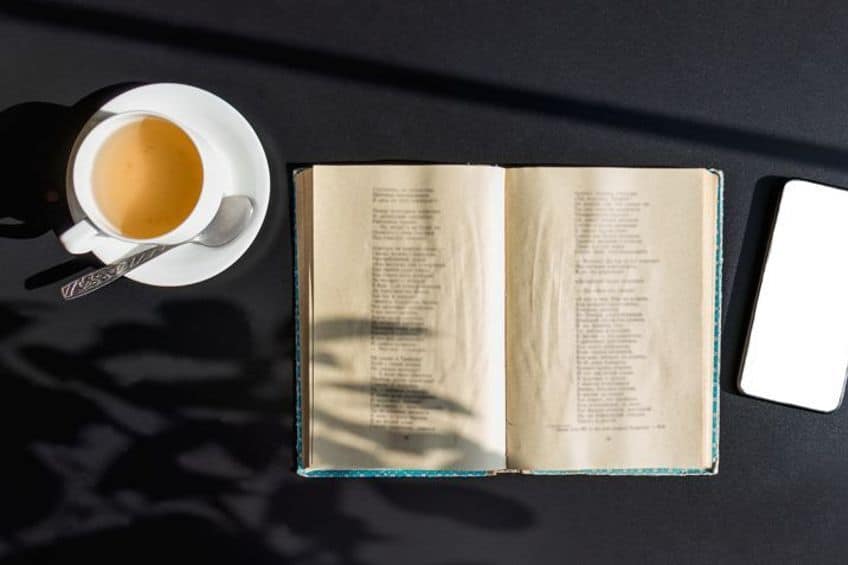
So, if you do want to get caught up in the semantics of it all: all language is metaphorical. This would then mean that all poetry is also metaphorical because it uses language. However, this should be seen as an academic exercise rather than something that can be seen in common usage. In common usage, a poem may choose to exclude direct metaphors, or it may even reject them outright, such as Muliebrity by Sujata Bhatt, in which she discusses a woman she sees in the street and states that she has “been unwilling to use her for a metaphor,/for a nice image”. This poem rejects using this person as a metaphor, but the title of the poem also means “femininity” and the poem is about a woman who is doing something traditionally seen as unfeminine, yet the speaker defends her as feminine. This means that we could say this woman in the poem is still a metaphor even if the idea of a metaphor was explicitly rejected.
What is a metaphor in poetry? Why do poems make use of metaphor? Now that we have come to the end of this list of poems with metaphors, these questions have hopefully been answered. We have looked at five different metaphor poem examples to get to this point, and while we have presented you with these poems with metaphors, there are many more poems with metaphors that are worthy of some attention. So, go and find some other poems with metaphors and see which you love more than any other!
Frequently Asked Questions
What Is a Metaphor?
Metaphor is one of the many figures of speech that can be found in language. The idea behind a metaphor is that it entails a direct comparison between two things in a non-literal sense. It is when one thing is used as a representation of another thing. For instance, a tree could be used in a text to represent life and growth, and this would make the use of the concept of a tree into a metaphor. However, the metaphor has transcended language alone, and it can be found in visual arts, film, and other creative mediums too.
What Is Metaphor in Poetry?
This simply refers to the use of metaphor in poetry. Many poems make use of metaphors to try and illustrate the point that they are attempting to make. For instance, the famous poem, Shall I compare thee to a summer’s day by William Shakespeare, uses the metaphor of a summer’s day to discuss the beauty of a person. This is likely one of the most notable and famous metaphor poem examples.
What Is the Difference Between Metaphors and Similes?
It is easy to confuse metaphors and similes, as they both involve a comparison of some kind. The primary difference is that a metaphor directly compares something, such as saying that beauty is a summer’s day, while a simile will compare two things using like or as, such as in a line like beauty is like a summer’s day. The difference between them is language-oriented, and they are often used together in the same text.
Why Do Poets Use Metaphor in Poetry?
Poets make use of metaphor in poetry for a very simple reason, and that is because we like to hear comparisons of this variety. We want to hear the way in which something can be compared to something else. In reality, everything is what it is, but in language, we can use what we love to further elevate someone we love, or we can use something we hate to elevate our hate for someone. Comparing a person to a perfect day is quite different from comparing them to a cockroach. We use metaphors in everyday language and in poetry because it allows us an instant mode of comparison between the different things in our lives.
Can a Poem Have No Metaphors?
This depends on how you look at the concept of the metaphor. Strictly speaking, all language is inherently metaphorical because the sounds we use as words do not actually equal the thing but are rather our language-based representation of those things. In this case, all poetry, and language only uses metaphor. However, if we take it to mean the use of metaphors in a poem on a non-basic language level, then a poem does not need to use a metaphor if it simply portrays things as they are, such as imagist poetry. It could still be argued that representing things as they are is still presenting a kind of metaphor.
Justin van Huyssteen is a freelance writer, novelist, and academic originally from Cape Town, South Africa. At present, he has a bachelor’s degree in English and literary theory and an honor’s degree in literary theory. He is currently working towards his master’s degree in literary theory with a focus on animal studies, critical theory, and semiotics within literature. As a novelist and freelancer, he often writes under the pen name L.C. Lupus.
Justin’s preferred literary movements include modern and postmodern literature with literary fiction and genre fiction like sci-fi, post-apocalyptic, and horror being of particular interest. His academia extends to his interest in prose and narratology. He enjoys analyzing a variety of mediums through a literary lens, such as graphic novels, film, and video games.
Justin is working for artincontext.org as an author and content writer since 2022. He is responsible for all blog posts about architecture, literature and poetry.
Learn more about Justin van Huyssteen and the Art in Context Team.
Cite this Article
Justin, van Huyssteen, “Poems With Metaphors – Representational Poetic Devices.” Art in Context. October 5, 2023. URL: https://artincontext.org/poems-with-metaphors/
van Huyssteen, J. (2023, 5 October). Poems With Metaphors – Representational Poetic Devices. Art in Context. https://artincontext.org/poems-with-metaphors/
van Huyssteen, Justin. “Poems With Metaphors – Representational Poetic Devices.” Art in Context, October 5, 2023. https://artincontext.org/poems-with-metaphors/.




